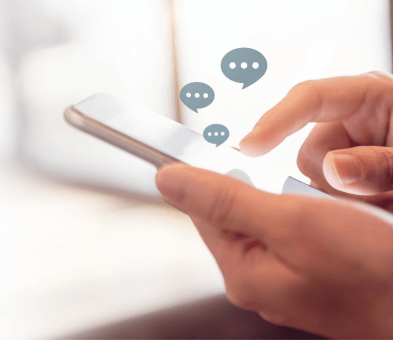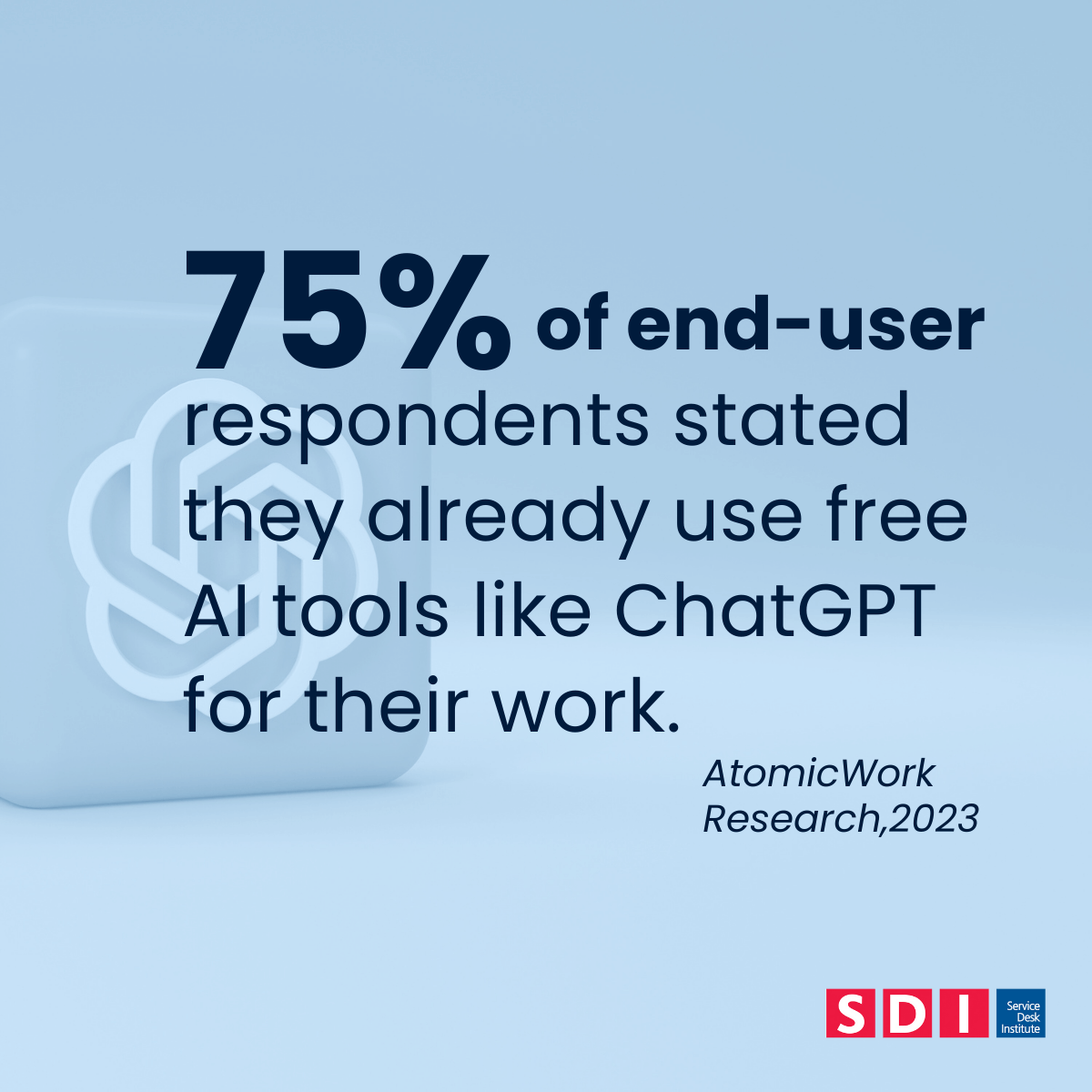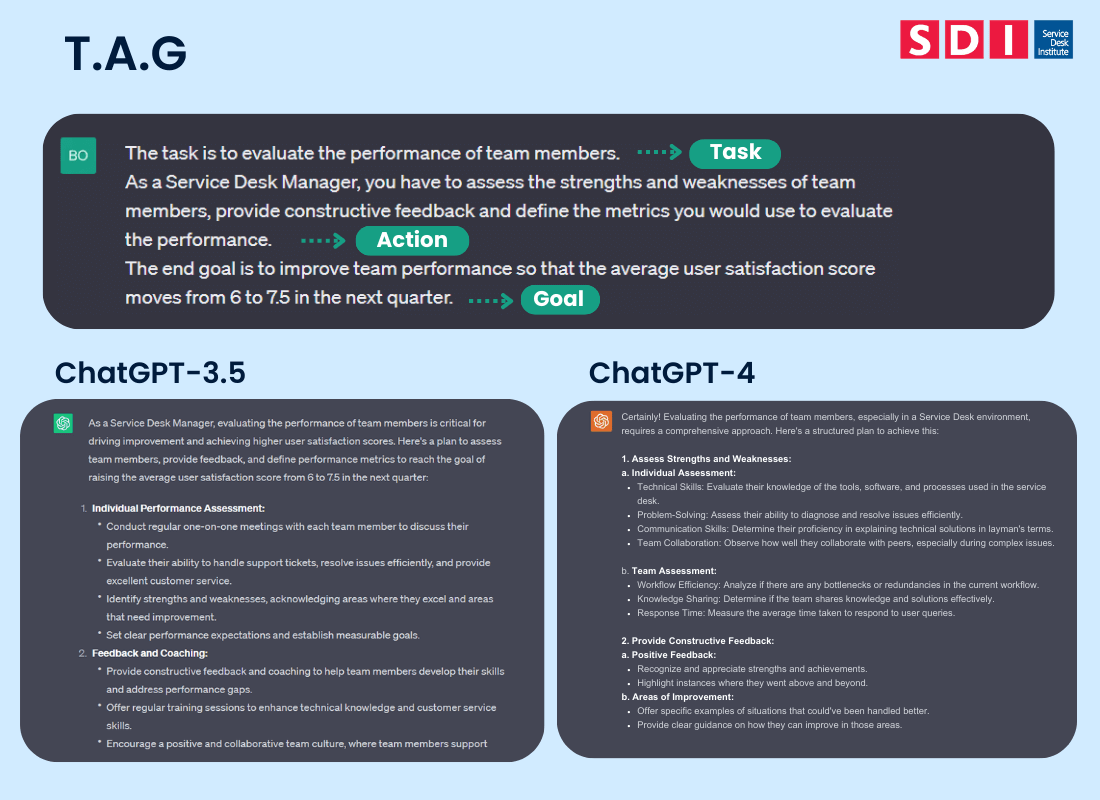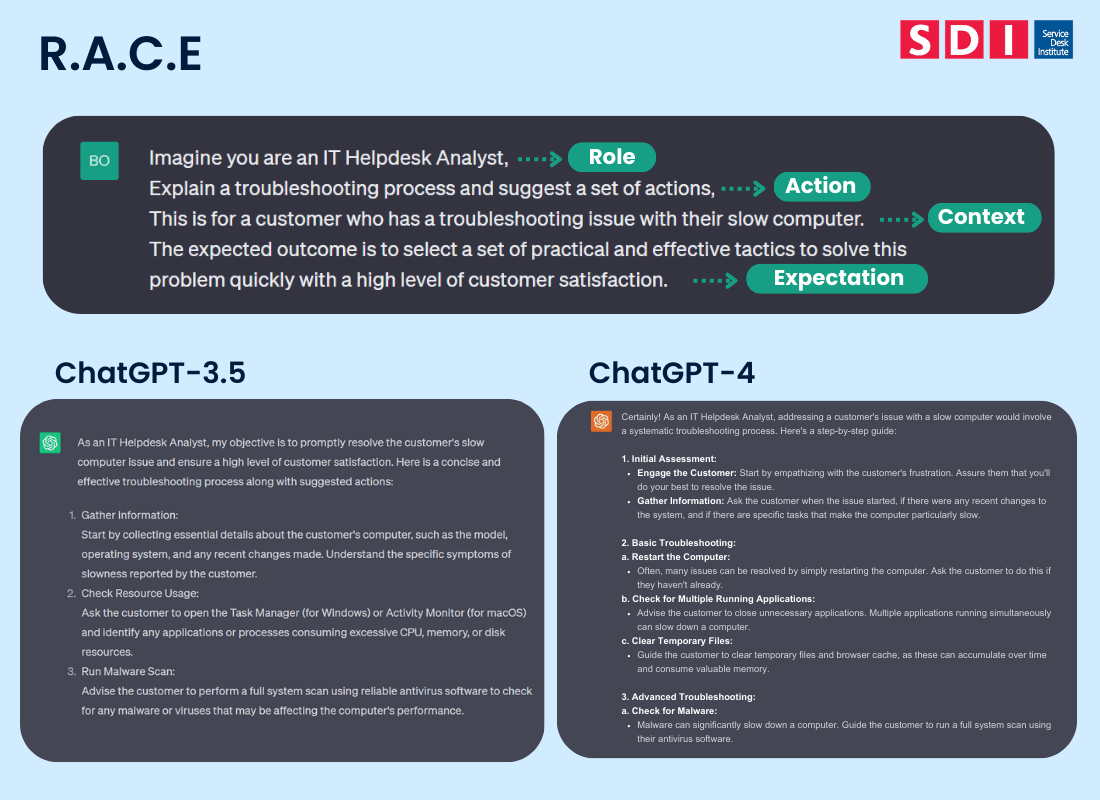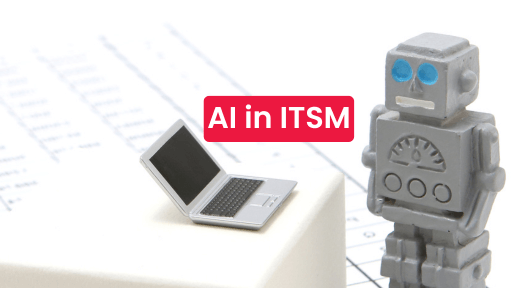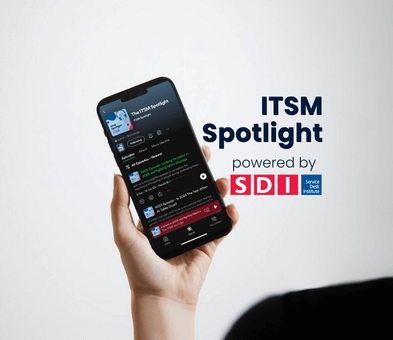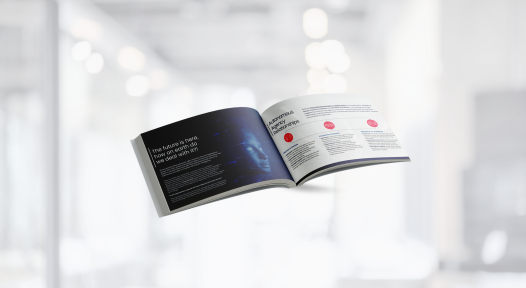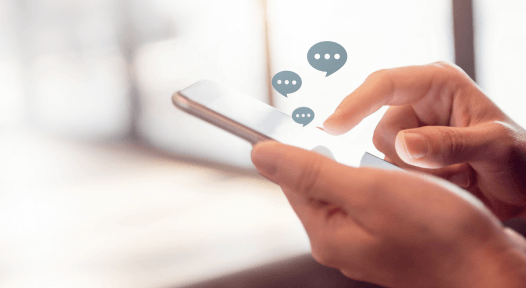 Back to Resources
Back to Resources
As artificial intelligence (AI) continues to advance, it’s important to find the right balance between human and AI work to succeed in the modern workplace. The rise of user-friendly AI tools, like ChatGPT, is a significant technological shift.
With over 100 million users in two months, ChatGPT has quickly become a popular choice for many people. So, understanding how to leverage these tools is becoming crucial for success – especially in the dynamic IT and ITSM industry.
In this article, we’ll explore 7 practical tips to help you harness the power of AI and enhance your productivity at work.
ChatGPT’s Influence on the Modern Workplace

According to the same AtomicWork research, most respondents said they are already using the ChatGPT tool for the following:
💡 Creative ideation or problem-solving (46%)
📩 Email drafting or editing (40%)
🖊️ Content creation or editing (35%)
📈 Market research (29%)
📊 Data Analysis and Synthesizing Insights – 29%
It’s evident that people are becoming more open to utilising AI-powered tools in their daily work routine to enhance their productivity and support their continuous learning journey. But when it comes to using AI tools like ChatGPT as a learning tool in your organisation, there are several key considerations to keep in mind.
First and foremost, it’s essential to identify your learning objectives and the areas where ChatGPT can add value. For instance, if you aim to enhance customer support skills, outline specific areas where ChatGPT can contribute, such as handling common queries or providing product information.
Customising ChatGPT’s output is key. So always ensure the generated output is accurate and resonates with your company culture. For example, if your company emphasises a friendly and approachable tone, tailor the language accordingly. Additionally, implementing a feedback mechanism can help continuously improve the ChatGPT learning experience. You can encourage other team members to provide feedback on the effectiveness of ChatGPT responses.
Finally, it’s crucial to prioritise security measures to protect sensitive company information and maintain data privacy. For instance, you can restrict access to specific data and regularly update security protocols to avoid potential threats. These things will help you improve your interaction with ChatGPT and foster a positive learning experience.
📕 Read more: Exploring ChatGPT: Stats and Insights You Can’t-Miss
7 Tips for Implementing ChatGPT into Workplace Learning
Let’s explore seven simple yet powerful tips to enhance your productivity and excel at work, using ChatGPT as a prime example in various workplace scenarios like customer support, business analysis, and content creation.
#1 Adopt a learning and experimentation mindset
Trying out a new AI tool that everyone is raving about can be both exciting and intimidating. To elevate some of that pressure, dive into AI tools like ChatGPT with a mindset for learning and experimentation. Start with trying different prompts and see what works best for you and your daily work and business needs.
⚡ Example: If you work in customer support, experiment with prompts to draft quick, accurate responses to common queries.
Prompts are a crucial component of Generative AI. Simply put, they are instructions or questions used to start or guide a task or conversation, enabling the AI to generate new content based on input data.
⚡ Example: Let’s say you’re a customer support representative looking to enhance your responses to common inquiries. Instead of a generic prompt like “Provide customer support tips,” try being specific: “Act as a customer support representative. Help me craft a concise response for a customer asking about the status of their order, including estimated delivery time and tracking information.”
#3 Get help with research
ChatGPT can be used in research and analysis. It can help you conduct competitor research, scenario analysis, survey interpretation, financial data understanding, and strategic planning support. Its quick processing ability and human-like responses can significantly increase the efficiency of business analysis tasks.
This can allow professionals to focus on strategic decision-making and provide valuable insights to drive business success. It can be useful for brainstorming and quick research.
⚡ Example: If you’re a business analyst, you can prompt ChatGPT to help you interpret the data, identify patterns, and extract meaningful insights in a few seconds.
#4 Enhance your communication skills
By using ChatGPT, you can get some help with writing, editing, brainstorming, and practising different communication scenarios. You can improve your emails by using ChatGPT to check their tone, generate email templates to save time or make your responses more professional and polished.
⚡ Example: Good communication skills are really important in customer support, and ChatGPT can help you improve these skills. Customer support teams can use ChatGPT for training sessions and role-playing scenarios. Agents can practice handling diverse customer interactions, gaining confidence and refining their communication skills.
#5 Automate repetitive tasks
Automating repetitive tasks with AI can save time and boost productivity, allowing you to focus on other goals and learning opportunities. If you perform the same actions repeatedly, such as writing the same emails or creating task lists, ChatGPT can save you time.
Simply identify those repetitive tasks and let ChatGPT handle them for you. Use ChatGPT to transform text from one format to another—summarise, translate, or even convert instructions into code.
⚡ Example: Instead of crafting identical emails for different customers, create a template for ChatGPT to customise with specific customer details. Simply save these templates in the ChatGPT sidebar for easy access. This not only streamlines email communication but also ensures consistency and personalised assistance.
#6 Use AI for planning and scheduling
Effective planning and scheduling are critical for productivity. So, incorporating AI into these processes can significantly enhance efficiency and support continuous learning in the workplace. And ChatGPT is excellent at creating plans and schedules, translations, summaries or even outputs formatted as tables.
⚡ Example: ChatGPT can assist you in drafting project plans for upcoming software development by generating detailed outlines, milestones, and task descriptions.
#7 Find the right balance between AI and human work
That’s right, it’s all about finding the balance. AI tools like ChatGPT can be super helpful – they’re quick and efficient and can provide quality outputs. But ChatGPT is missing that human touch. So, it’s very important to include human insights, creativity, and problem-solving skills in the generated outputs and not rely solely on the machine.
⚡ Example: You can use ChatGPT to troubleshoot a complex tech issue and gather information and suggestions. But remember, you still have to use your knowledge, intuition and experience to resolve the issue and craft a solution to the specific customer request.
Final thoughts
Incorporating AI tools like ChatGPT into your daily work routine can boost your productivity and efficiency. And remember, it’s not about replacing your work with AI tools —it’s about finding the right balance and working together to achieve productivity and company goals.






